Clearing out your garden to make room for new plants can sometimes take additional research. Do you have a few conifers growing in your landscape that you want to remove but don't know where to start? Is it possible to get rid of this shrub and tree species entirely?
Luckily, we've done plenty of research and have the answers for you!
If you have a mature or even newer conifer growing in your garden that you want to remove, this is much easier than you'd think. Conifers are larger shrubs or trees with wide, shallow root systems that can wreak havoc in a landscape.
So, to remove one, you want to use a chainsaw, axe, or a sharp mattock and cut your plant down to its base. Luckily, the stump of your tree or shrub won't regrow a new plant and should decompose naturally.
As we begin, we will cover all things conifers and show you how to remove one. Whether your garden has too many pinecones falling around, you can't handle the roots of your plant, or you have additional questions, we're here to assist. With that said, let's dive right in!
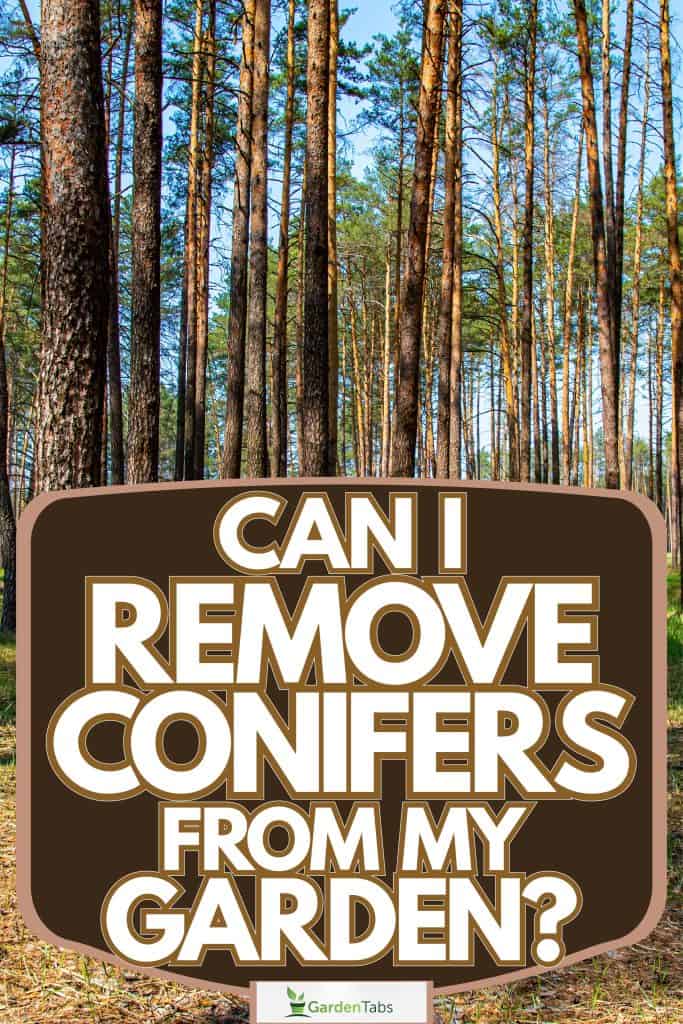
How Do You Remove A Conifer From Your Garden?
If you have a conifer you no longer want in your landscape, cut it down to the ground. As we said, these plants have incredibly shallow and expansive roots, which can become an issue in your yard.
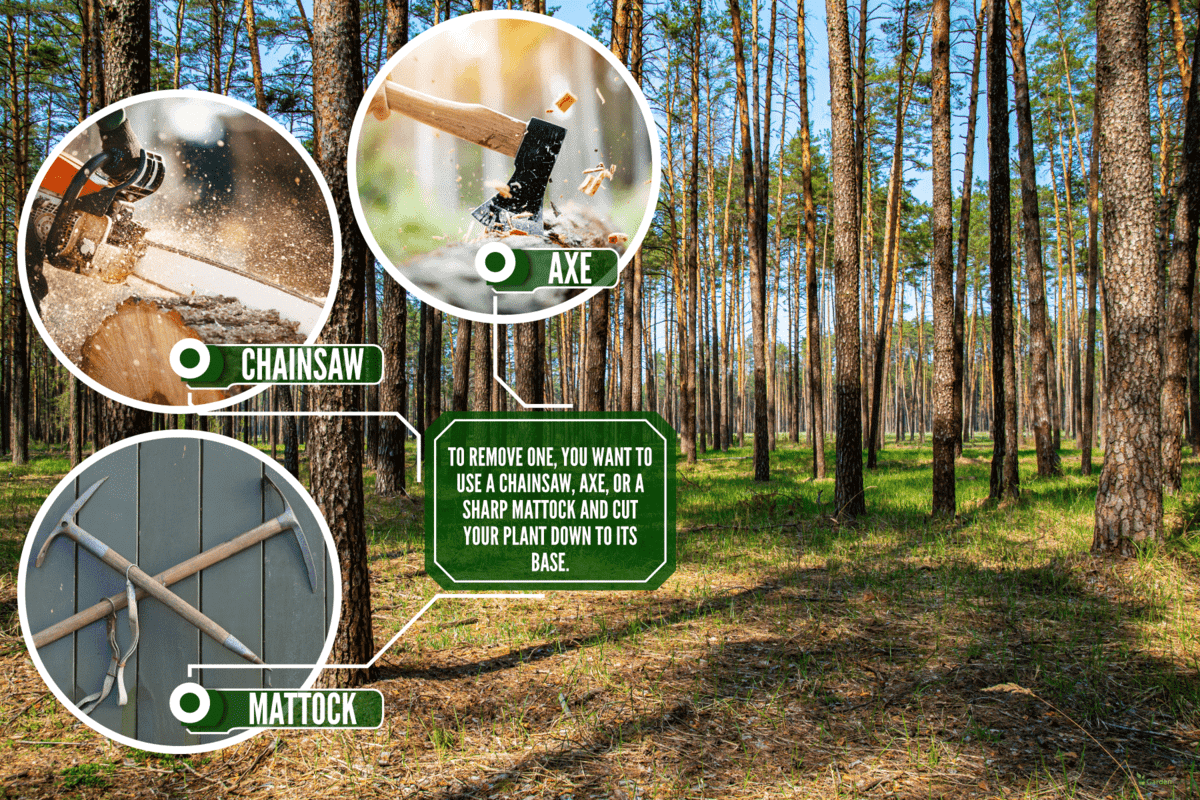
Therefore, having a conifer too close to other vegetation can put their health at risk. So, you want to grab a chainsaw for larger conifer trees, cutting down the plant to its stump.
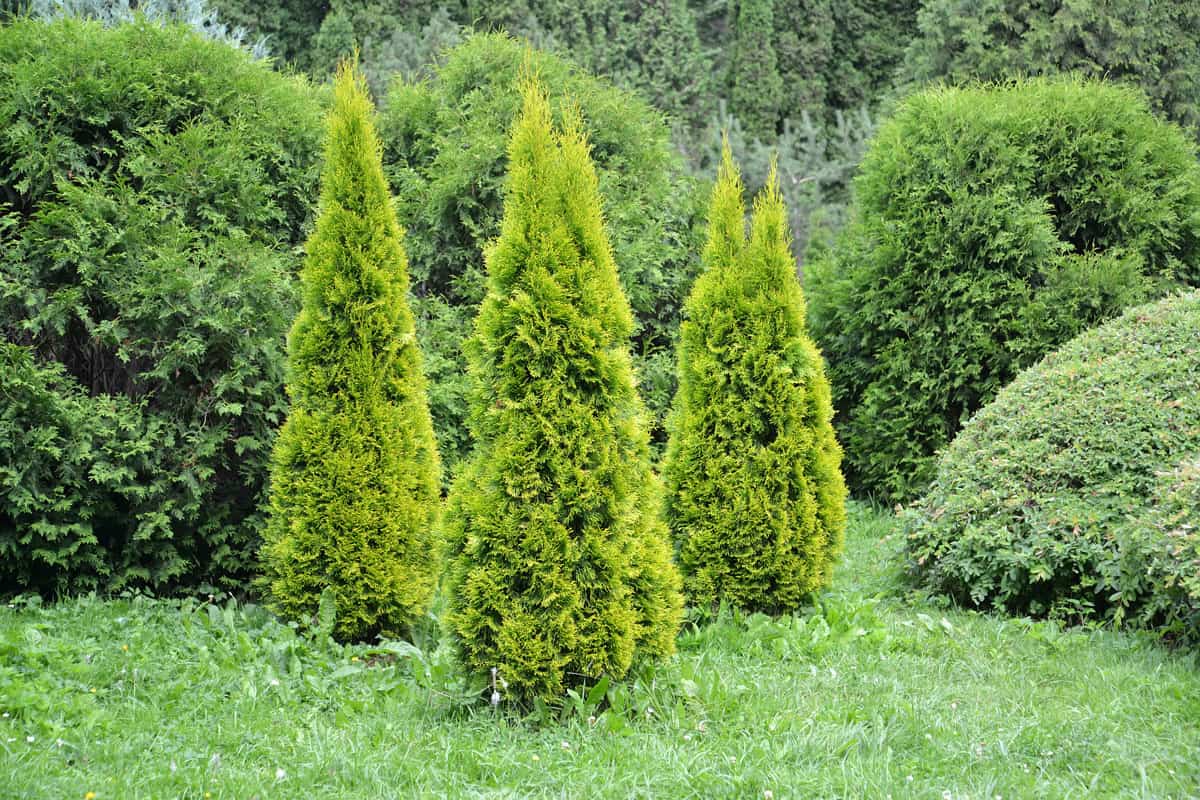
For smaller conifers, you may have luck using an axe or mattock, but this depends on the thickness of your conifer. If you're worried about this, we recommend sticking with a chainsaw.
According to experts, you want to cut grooves around the trunk's circumference below the lowest branches. These grooves should be 1-1.5 inches deep if you have a large conifer.
For smaller conifers, keep the grooves about a 1/2 inch deep. The key is attacking the plant at its base, which will speed up the process.
Maxlander Corded Electric Chainsaw
This electric chainsaw has an 18-inch chain, features a 3/8 chain pitch and 0.050 chain gauge, is perfect for tree cutting, can cut limbs up to 34 inches thick, has an auto chain oiler, and weighs roughly 12 pounds.
Follow this link to see it on Amazon.
Are Conifers Easy To Remove?
In general, it should be pretty easy to remove a conifer. Depending on the size of your tree or shrub, you may need to contact a specialist to ensure the rest of your property isn't harmed.
However, if you have a manageable conifer, you should be able to cut it down using a simple chainsaw. Like any tree or thick shrub, a conifer won't be too challenging to cut through.
Again, that can vary, so sometimes, this will take a few people.
According to garden pros, conifer removal usually happens in a few steps:
- Tall trees are reduced (cut from the top down)
- Large branches/sections are removed
- The conifer is cut at its base
- The stump is physically ground or cut out
So, you can see how removing a bigger conifer can take some extra work. Regardless of size, pruning down a conifer before cutting it down can make cleaning easier for you.
Imagine cutting down a massive tree without any prep. The size of your conifer can be overwhelming and seemingly impossible to bag up and dispose of.
Remember, it's easier to clean up multiple pieces of a large tree than one single plant.
Will Conifers Grow Back After You Cut Them Down?
If you cut down a conifer, it will not be able to grow back. Even though some tree/shrub species can show new sprouting after being cut to the ground, this is not the case for conifers.
Luckily, this species can't handle the extreme devastation of being cut down to the trunk, so think of this as a permanent solution. According to experts, they have no dormant buds on the older parts of their trunk, so conifers can't replenish themselves.
An interesting fact about conifers is they tend to self-prune. This tree/shrub species grows tall, often shooting straight into the sky. This can make caring for one more difficult without professional equipment.
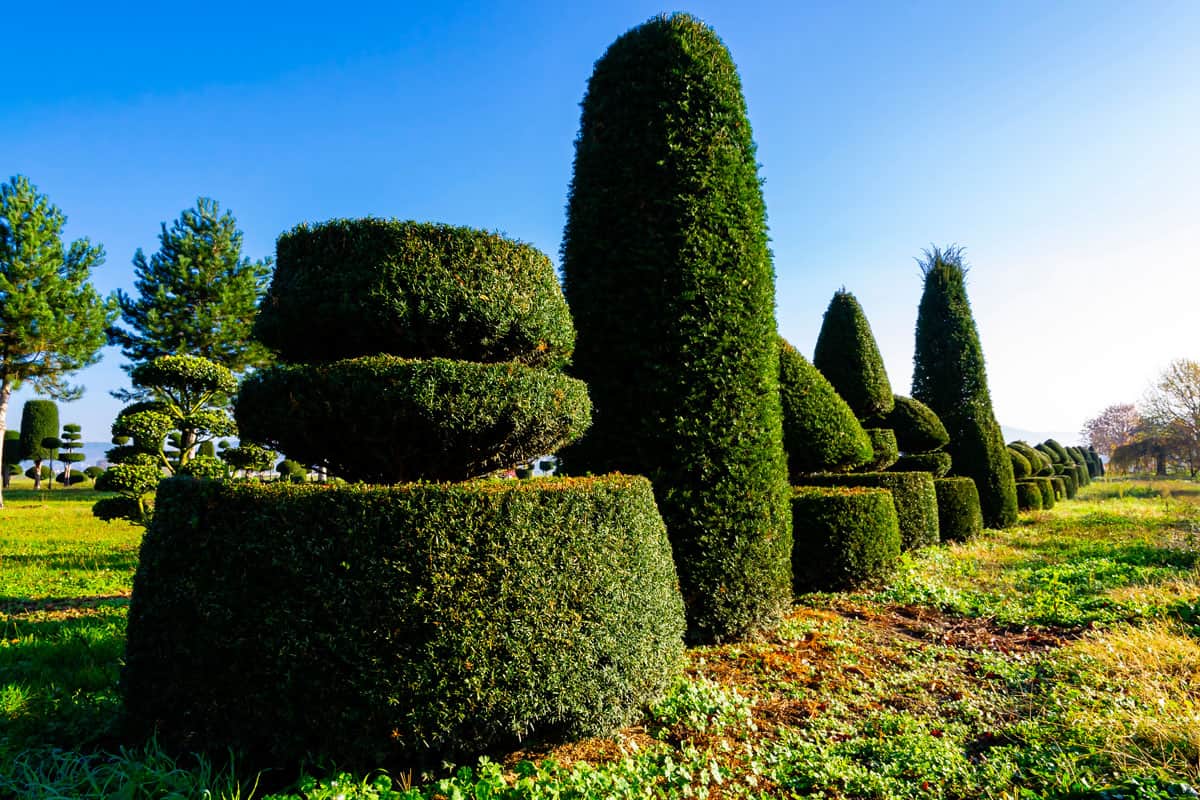
Therefore, if you no longer want to deal with your conifer, cutting it to its base permanently stops it from growing and maturing. Even though this species is deciduous, such severe pruning is almost always a death sentence for conifers.
What Happens If You Cut The Top Off A Conifer?
Since conifers grow upward in a straight formation, cutting their top section can do more harm than good.
Generally, cutting off the top of a conifer will stop your tree/shrub from growing upwards, but instead, take on a crooked shape leading to the soil.
Your tree may also lose its aesthetic value when you do this, so we don't recommend top-end pruning. On top of that, cutting off the top of a conifer tree can expose it to disease, decay, or insects that harm it.
We recommend pruning your conifer from all sides, leaving the top alone. The last thing you want to do is try and control your tree only to make it look off-putting and be more susceptible to issues.
And, if all else fails, you can chop down the tree down to the soil and plant a different species.
Do Conifer Roots Go Deep?
No. Conifer roots are not deep; they're shallow, extremely broad, and dense. Typically, conifers become a problem in a landscape because of how aggressive and shallow their roots can become over time.
One of the main complaints with this species is its roots, often forcing gardeners to remove the tree or shrub entirely. An interesting detail about conifer roots is that most settle in the top three feet of soil.
Compared to other large trees or shrubs with roots down six or more feet in the soil, conifers can be more fragile and sensitive to high winds/heavy storming.
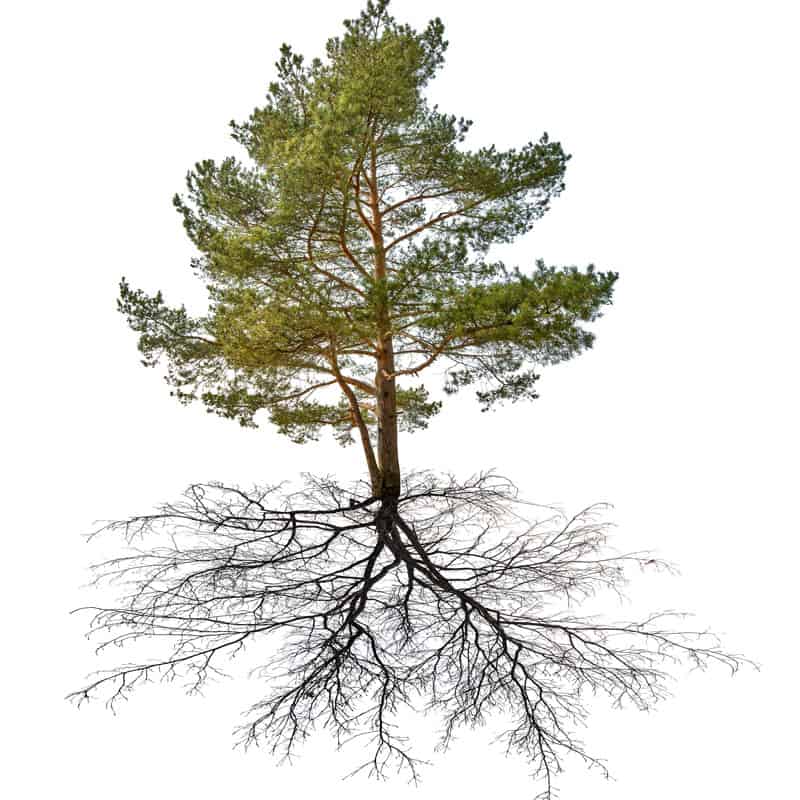
With that said, according to Mr. Tree Services, if you plant conifers in sandy soil, that's when it's possible to see them develop deeper, stronger roots.
Regardless, your tree/shrub will be somewhat aggressive and invasive to other nearby plants, which can cause them to fight for nutrients, water, and ground space.
You might have some luck pruning the roots around your tree if they become too spread out, but this can open your plant up to issues if you aren't careful.
How Close To A House Can You Plant Conifer?
If you want to plant a conifer or need to transplant one, try and keep it ten or more feet from your home. Like most trees, it's better to leave more space than not enough for conifer so their roots don't become a problem.
For example, if you plant a conifer too close to a sidewalk or structure, it's possible to see lifting, cracking, and even severe damage that can be expensive to repair.
Therefore, it can be helpful to leave plenty of ground space for your tree/shrub to ensure it doesn't end up messing with the foundation of your home or any related structures.
Again, your tree won't usually become strong enough to create severe damage, but the older a conifer, the more space it will need (whether you have it or not).
How Big Do Conifers Get?
Depending on the conditions, you can generally expect a conifer to become six to 15 feet tall. According to gardening experts, "intermediate size" conifers grow about 6-12 inches annually, while larger plants grow upwards of one foot yearly.
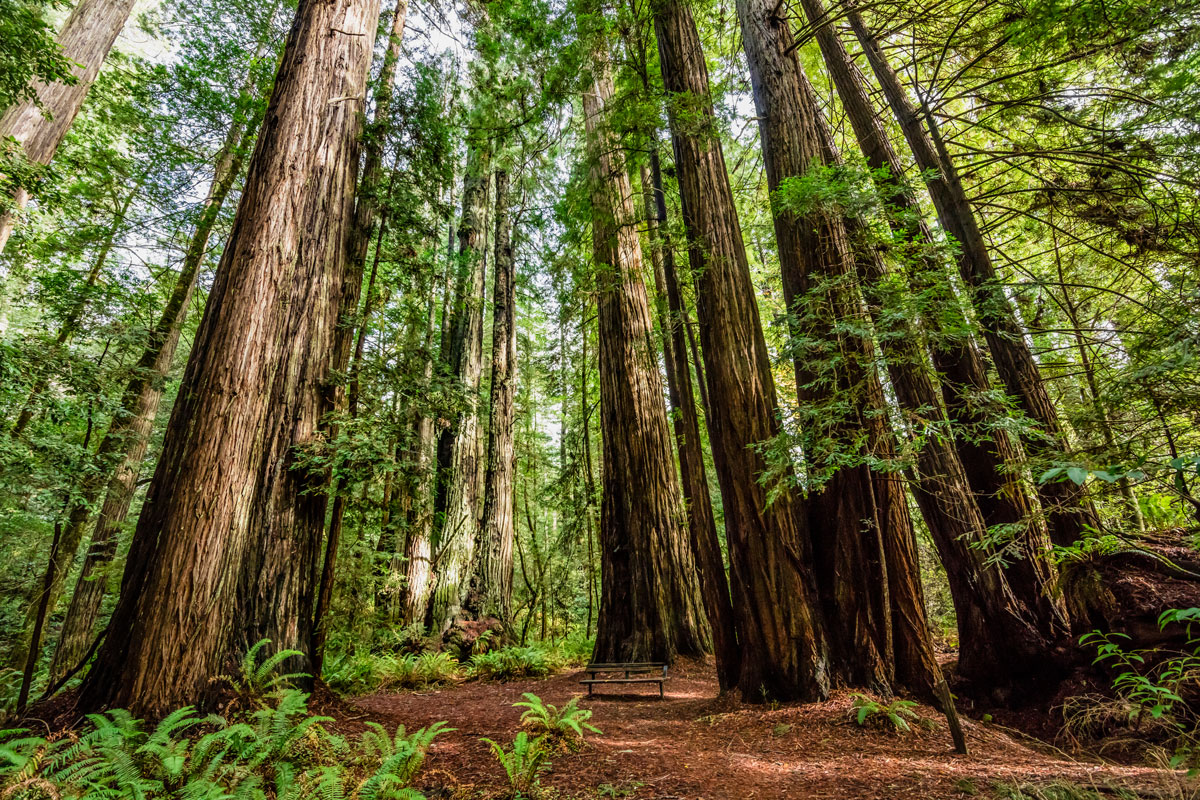
So, if you have a larger conifer, it's possible to see your plant reach its full sizing within the first decade. Especially for gardeners with smaller plots of land, a fast-growing, aggressive tree can become a problem.
Therefore, you might need to do more regular pruning or remove your conifer entirely in severe cases. An interesting fact about conifers is that even dwarf varieties can reach five feet tall upon maturity.
So, if you want a small, manageable tree or shrub for your landscape, this species may not be for you. On top of that, in moderate climates, conifers can become even taller than 15 feet, so this is different for everyone.
Are Conifers Invasive?
Although most conifer varieties have become naturalized throughout North American forests and landscapes, their roots are considered somewhat invasive.
As we said, conifer roots tend to be shallow and dense. That can quickly become a hurdle for your other vegetation to maneuver, with smaller plants eventually dying because your conifer is taking all the nutrients and water from the soil.
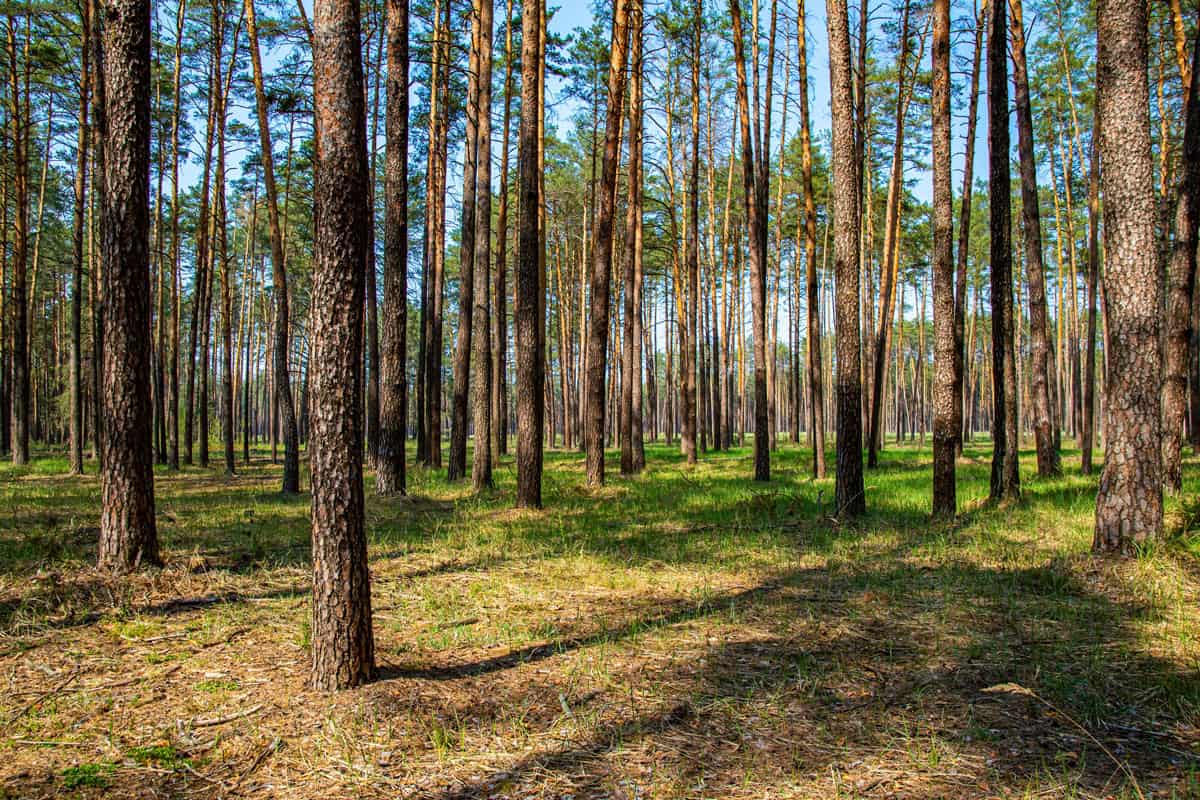
Luckily, if you keep your conifer separated from other plants, there shouldn't be an issue. Study.com mentions how conifer roots create intricate root systems just beneath the ground's surface, often drowning out smaller systems nearby.
So, keep everything in your landscape spaced out to prevent fighting/invasive behavior down the road.
To Finish Up
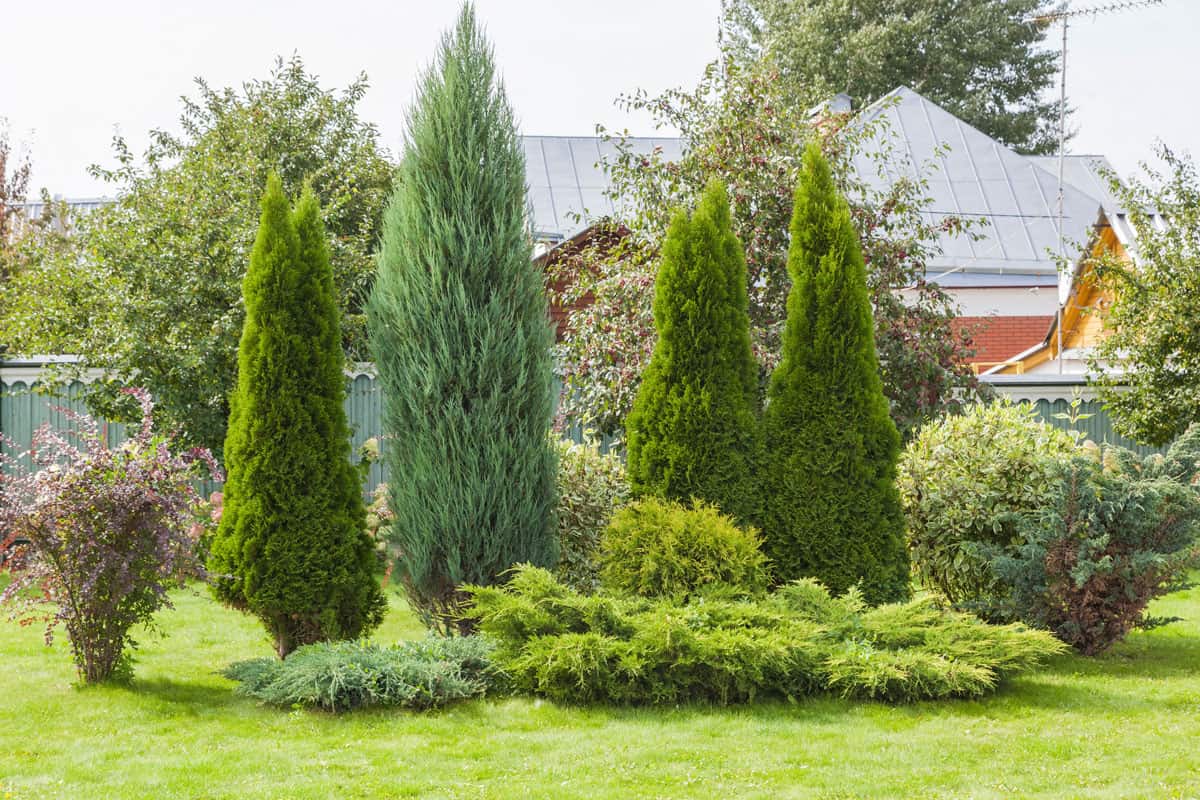
Whether you have a conifer in your garden you want to remove or can't control, it's essential to understand this species. Generally, you can remove a conifer from your garden using a chainsaw, although smaller trees and shrubs can be cut down with an axe or sharp mattock.
You want to cut your tree/shrub down to the ground, leaving a hollow trunk. From there, your plant may decompose on its own, or you can manually dig it from the soil.
Be careful when removing conifers, and don't hesitate to contact a professional for help!
Made it this far? Check out these helpful related garden articles below:
How To Remove Tree Roots From Under Your Driveway?
How To Shape A Conifer Tree Into A Spiral [Step By Step Guide]




Can you tell me if conifers are protect in any way. NPO or Tpo. I have six I want removed and I need to know if they can be taken out with no planning or permission